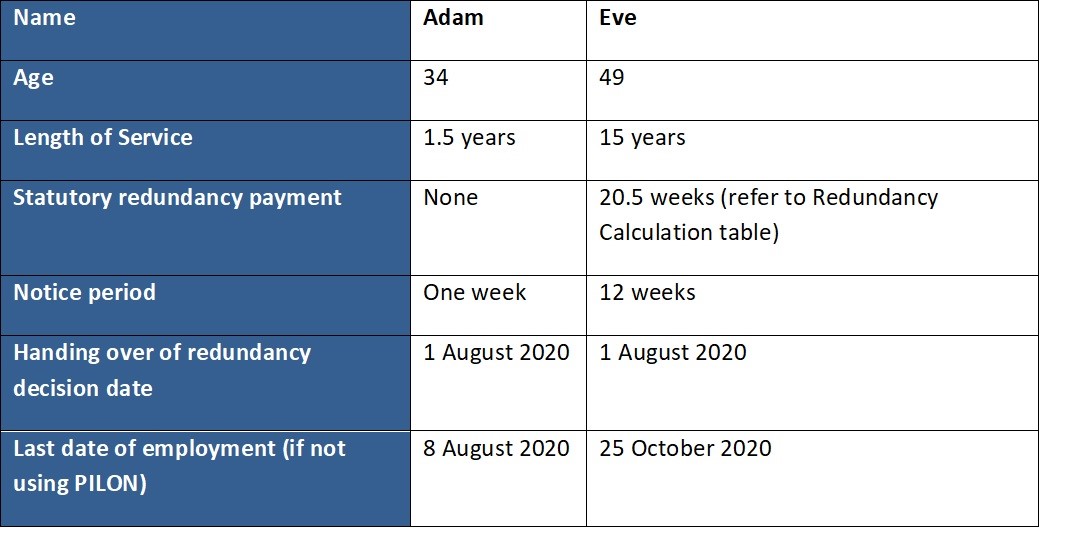Checking Out the Operational Characteristics of Business Redundancy and Its Long-Term Sustainability

Redundancy Techniques for Service Continuity
In order to make certain uninterrupted operations, organizations must implement effective redundancy methods for service continuity. Redundancy in this context refers to the replication of essential components or features within a system to minimize the impact of potential failings. By including redundancy strategies, companies can enhance their resilience against disturbances brought on by numerous elements such as natural catastrophes, equipment failures, or cyber-attacks.
One usual redundancy approach is the application of backup systems and information storage space options. This involves creating duplicates of important information and systems that can be activated in situation of a main system failing. In addition, companies can establish repetitive communication networks and power resources to keep connection and operations throughout unanticipated events.
Furthermore, cross-training staff members to carry out several roles within the firm can work as a beneficial redundancy approach. If key employees are inaccessible due to illness or other reasons, this makes certain that necessary tasks can still be brought out even. Generally, effective redundancy approaches are important for organizations to support functional connection and minimize the influence of prospective disruptions.
Effect of Redundancy on Organizational Strength
Given the crucial role redundancy methods play in ensuring company connection, discovering the influence of redundancy on organizational resilience becomes essential for understanding the holistic operational characteristics of a business. Redundancy, when strategically carried out, can dramatically contribute to improving a company's strength in the face of unforeseen challenges.
In addition, redundancy can strengthen worker spirits and confidence, understanding that there are backup plans in place to resolve unexpected situations. This feeling of security can result in raised productivity and an extra favorable work environment. In addition, redundancy can foster technology and imagination within a company as staff members really feel equipped to take calculated risks, knowing that there is a safeguard to sustain them in instance of failure. On the whole, the influence of redundancy on organizational resilience is profound, shaping the lasting sustainability and success of a company.
Stabilizing Effectiveness and Adaptability in Redundancy
Attaining an unified equilibrium between operational performance and flexible adaptability is a pivotal challenge in the strategic deployment of redundancy within companies. Effective procedures are necessary for keeping performance and cost-effectiveness, guaranteeing that sources are made use of efficiently. Nevertheless, extreme emphasis on performance alone can cause strength, making it difficult for organizations to adapt to unpredicted modifications or difficulties. On the other hand, adaptability allows organizations to react nimbly to progressing scenarios, fostering technology and resilience. Yet, way too much adaptability without a strong operational structure can result in inadequacies and incongruity.
To stabilize efficiency and adaptability in redundancy planning, organizations should very carefully evaluate their operational needs, market dynamics, and strategic goals. Inevitably, locating the ideal balance between efficiency and flexibility is important for constructing a lasting and resistant company in the face of unpredictability.
Long-Term Sustainability With Redundancy Planning
To guarantee enduring stability and stability, companies have to purposefully straighten their redundancy preparation with long-term sustainability objectives, thereby balancing functional performance with adaptive flexibility. Long-term sustainability through redundancy planning includes even more than simply short-term cost-cutting steps. It calls for a detailed strategic technique that prepares for future obstacles and chances. Companies need to check out redundancy not as a reactive solution to instant problems however as a proactive method for lasting success. By incorporating redundancy preparation with sustainability purposes, companies can develop a resilient structure that can withstand numerous market changes and interior adjustments.

Positive Procedures for Sustainable Company Workflow
Just how can business proactively improve their functional sustainability for long-lasting success? Carrying out aggressive procedures is crucial for firms aiming to guarantee sustainable operations.
Additionally, fostering a society of continuous enhancement and learning within the company can boost flexibility to transforming market conditions and customer needs. Encouraging staff member involvement in decision-making processes and giving opportunities for professional development can improve spirits, performance, and general performance. Developing clear objectives, monitoring key efficiency indicators, and regularly examining progression are crucial parts of aggressive sustainability management.
Collaborating with distributors, consumers, and various other stakeholders to advertise lasting techniques throughout the supply chain can produce a ripple impact of favorable influence - redundancy pay if company goes bust. By taking positive steps towards functional sustainability, companies can construct resilience, drive development, and protect their long-lasting success in an ever-evolving organization landscape
Verdict
In the world of organizational monitoring, the tactical deployment of company redundancy stands as an essential yet complex technique that demands a fragile balance in between operational efficiency and long-term viability. By studying the functional characteristics that underpin business redundancy and assessing its his explanation broader ramifications for business durability and versatility, a nuanced understanding of exactly how redundancy approaches can shape the future trajectory of a firm begins to unravel.Given the vital duty redundancy approaches play in making sure company connection, exploring the impact of redundancy on business strength becomes vital for recognizing the holistic operational dynamics of a company. In general, the influence of redundancy on business durability is extensive, shaping the long-term sustainability and success of a company.
In final thought, comprehending the functional characteristics of business redundancy is important for making sure long-term sustainability.
Comments on “Clarified: If a Company Goes Bust Who Pays Redundancy in the UK?”